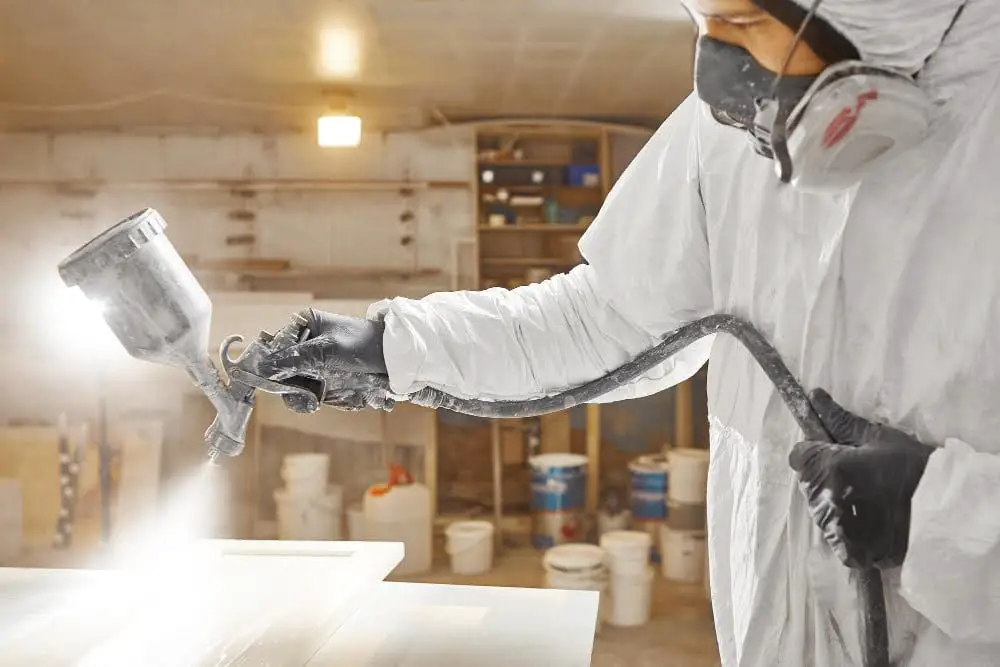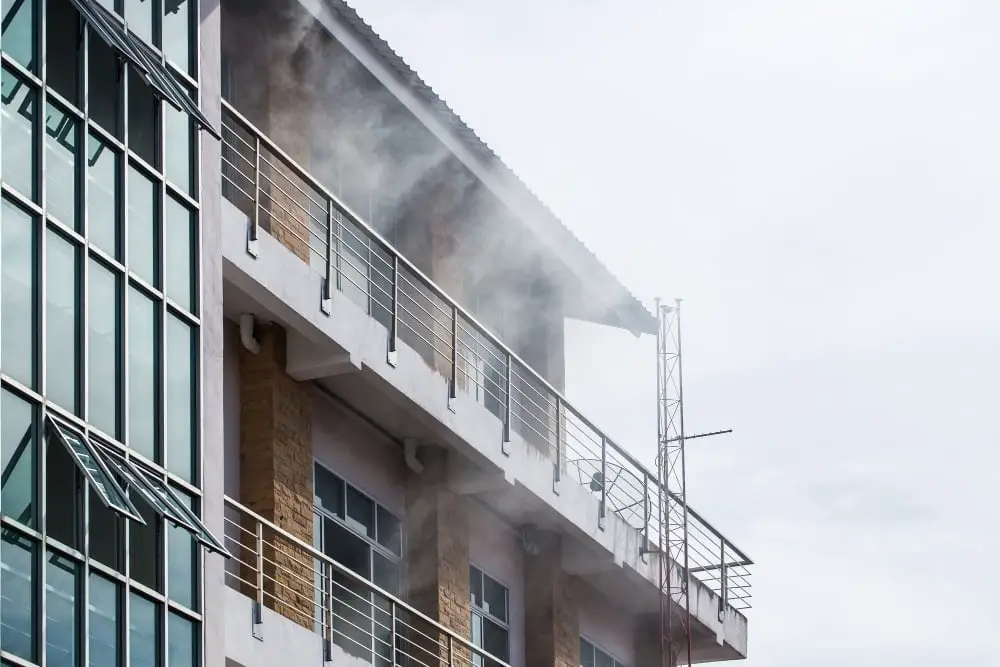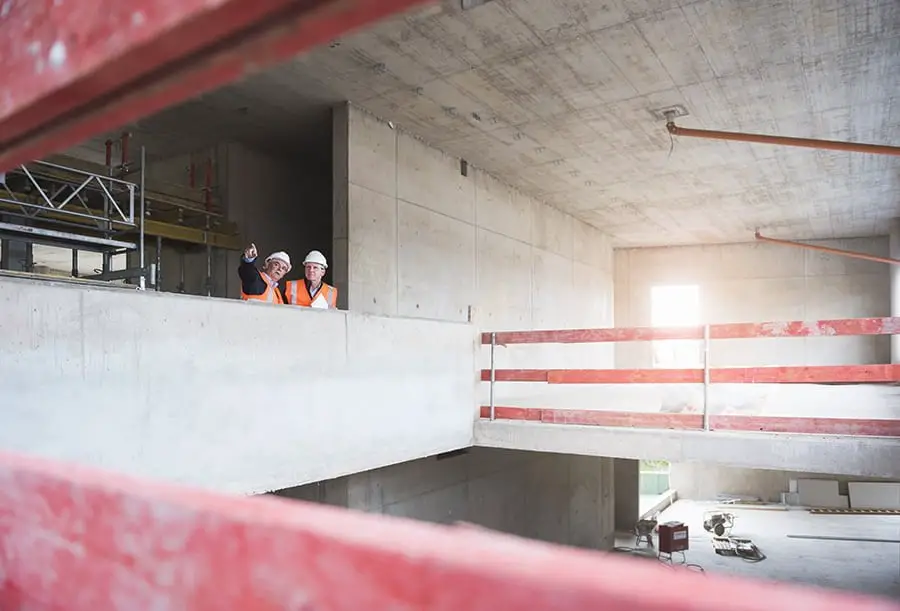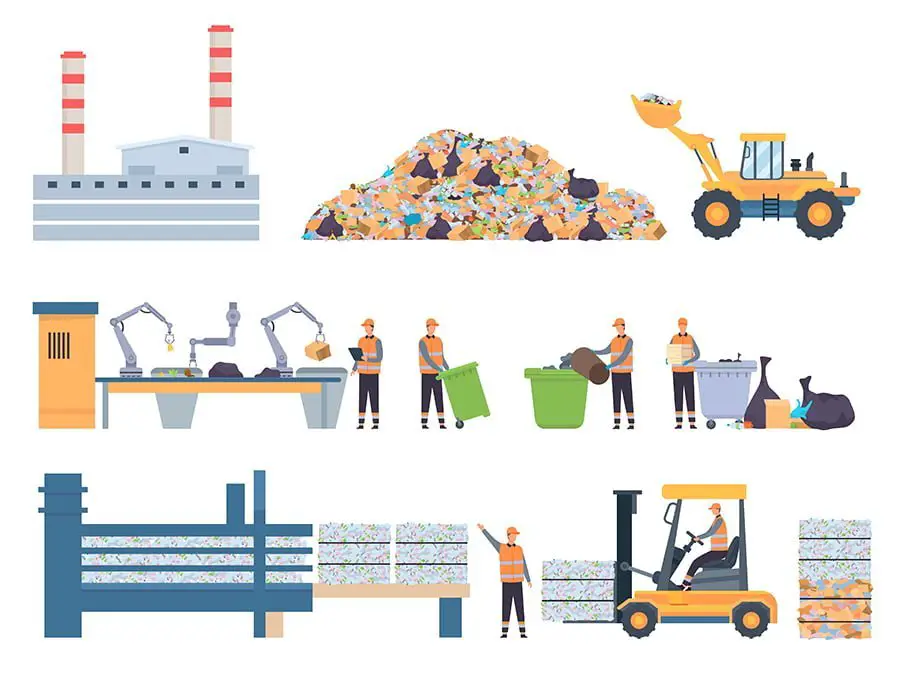In this article, we will explore the latest advancements and challenges in fire-resistant polymer manufacturing for the construction industry.
I’m excited to share with you some groundbreaking advancements in fire-resistant polymer manufacturing that are changing the game for construction professionals everywhere. These materials not only resist flames but also provide durability and strength to structures.
In this blog post, we’ll explore some of the latest developments in this field as well as some of the challenges that still need to be overcome.
Fire-Resistant Polymers: An Overview

Fire-resistant polymers are a type of material that has been specifically designed to withstand high temperatures and resist flames. They are commonly used in the construction industry to improve the fire safety of buildings, particularly those with high occupancy or where hazardous materials may be present.
These polymers can be made from a variety of different materials, including plastics, rubbers, and fibers. They work by either releasing water or other chemicals when exposed to heat or forming an insulating layer that prevents further combustion.
Fire-resistant polymers have become increasingly popular due to their ability not only just resisting flames but also providing durability and strength against natural disasters like earthquakes.
In recent years there have been significant advancements made towards improving these materials’ performance characteristics such as increased resistance time under extreme conditions like higher temperature exposure times before melting down completely – making them more reliable than ever before!
Advancements in Polymer Manufacturing

In recent years, the construction industry has seen significant advancements in fire-resistant polymer manufacturing. These materials are designed to withstand high temperatures and prevent the spread of flames, making them an ideal choice for building structures that need to meet strict safety regulations.
One of the most exciting developments is the use of nanotechnology in polymer manufacturing. Nanoparticles can be added to polymers during production, which enhances their thermal stability and flame-retardant properties.
This means that even if a fire breaks out, these materials will not contribute fuel or oxygen to it.
Another advancement is the development of intumescent coatings for polymers. These coatings react when exposed to heat and expand rapidly into a thick layer that insulates against flames and prevents further damage from occurring.
These advancements have made it possible for architects and builders alike to create safer buildings without sacrificing design or functionality. With new technologies emerging every day, we can expect even more innovative solutions on the horizon!
Challenges in Construction Sector

While fire-resistant polymers have come a long way in recent years, there are still some challenges that need to be addressed. One of the biggest challenges is cost.
Fire-resistant polymers can be more expensive than traditional building materials, which can make them less accessible for smaller construction projects or those with tight budgets.
Another challenge is ensuring that these materials meet safety standards and regulations. While fire-resistant polymers may provide better protection against flames, they must also meet other requirements such as structural integrity and durability.
In addition to these challenges, there’s also the issue of educating builders and architects on how to properly use these new materials in their designs. It’s important for professionals in the construction industry to understand not only how fire-resistant polymers work but also when and where they should be used.
Despite these obstacles, I believe that advancements in fire-resistant polymer manufacturing will continue to revolutionize the construction industry by providing safer buildings for people around the world.
Polymer Applications in Building Safety

Polymer applications in building safety have come a long way since the days of asbestos and other hazardous materials. Today, fire-resistant polymers are being used to create safer buildings that can withstand extreme temperatures and prevent the spread of flames.
One example is intumescent coatings, which expand when exposed to heat and form a protective layer over surfaces such as steel beams or walls. This slows down the rate at which they heat up during a fire, giving occupants more time to evacuate safely.
Another application is in insulation materials like expanded polystyrene (EPS), which has been shown to resist ignition for longer periods than traditional insulation products. EPS also releases fewer toxic fumes when burned compared with other types of foam insulation.
Despite these advancements, challenges still remain in ensuring that all construction projects use safe polymer-based products. One issue is cost; some builders may opt for cheaper but less effective alternatives instead of investing in high-quality fire-resistant polymers.
However, it’s important not only from an ethical standpoint but also from an economic one – fires can cause significant damage both financially and emotionally if lives are lost or people injured due to inadequate safety measures.
While there are still challenges ahead regarding widespread adoption by builders across different regions globally- we must continue pushing forward towards using safer building materials like Fire-Resistant Polymer Manufacturing techniques so we can build structures that protect us against this destructive force called “fire”.
Flame-Retardant Technologies

One of the most promising areas of research in fire-resistant polymer manufacturing is flame-retardant technologies. These are materials that can slow down or even stop the spread of flames, giving people more time to evacuate a building and firefighters more time to contain a blaze.
In recent years, there have been significant advancements in this field. For example, researchers have developed intumescent coatings that expand when exposed to heat and form an insulating layer over surfaces such as steel beams or wooden panels.
This layer helps prevent oxygen from reaching the fuel source and slows down combustion.
Another exciting development is nanocomposites – materials made up of tiny particles dispersed throughout a matrix material – which can enhance flame retardancy by creating barriers against heat transfer.
Despite these advancements, challenges still remain in developing effective flame-retardant technologies for polymers used in construction applications. One major challenge is finding ways to make these materials both durable enough for long-term use while also being cost-effective for builders on tight budgets.
However, with continued research and innovation within this field we may soon see widespread adoption of fire-resistant polymers across all sectors within construction industry; making buildings safer than ever before!
Regulatory Standards & Compliance

While fire-resistant polymers offer a promising solution to the problem of building fires, it’s important to note that regulatory standards and compliance play a crucial role in ensuring their effectiveness. In many countries, there are strict regulations governing the use of construction materials, including those that claim to be fire-resistant.
For example, in the United States, all building materials must meet certain standards set by organizations such as Underwriters Laboratories (UL) and ASTM International. These organizations test products for safety and performance under various conditions before certifying them for use.
However, even with these regulations in place, there have been instances where supposedly “fire-resistant” materials have failed during real-world fires. This highlights the need for ongoing research into new manufacturing techniques and testing methods that can better simulate real-life scenarios.
As we continue to explore advancements in fire-resistant polymer manufacturing technology within the construction industry – it is essential not only to focus on innovation but also on meeting regulatory requirements while maintaining high-quality standards.
Environmental Impact & Sustainability

While fire-resistant polymers have been a game-changer in the construction industry, there is growing concern about their environmental impact and sustainability. As we continue to develop new materials that can withstand high temperatures and resist flames, it’s important to consider how these advancements affect our planet.
Fortunately, many manufacturers are taking steps towards creating more sustainable fire-resistant polymers. For example, some companies are using recycled materials or developing biodegradable options that break down over time without harming the environment.
As someone who has always been fascinated by nature’s power and beauty, I believe it’s crucial for us to prioritize sustainability in all aspects of our work – including construction. By choosing eco-friendly building materials like sustainable fire-resistant polymers whenever possible, we can help protect both people and the planet from harm caused by fires while also preserving natural resources for future generations.
Recap




